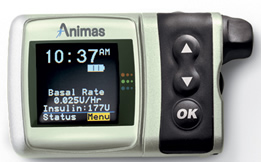I'm thrilled to say that happened on the 25th November. So I've been using it for two weeks. I had a little hiccup with my pump, which decided to die on the 30th, which made me appreciate the CGM more as it's so helpful the not only know what my blood sugars are but also know where they are going. It was such a relief to see that down arrow.
This time around I feel like I know what I'm doing this time around with this new gadget. The workshop I attended in July presented by author of "Think like a Pancreas", Gary Scheiner entitled "Making Sense of the CGM Data" also helped.
The technology was so new to me in June that I was preoccupied by "how does this thing work?". I was only just getting a handle on having all that extra information by the end of the two weeks. I had been able to upload the information to the software programme and identify trends where I could make some adjustments in my insulin regimen.
But then the trial ended and it was like being blind again.
The major benefit of having a CGM is having this;
 |
| This is the graph from my CGM data. |
and knowing what to do with all those extra data points.
After two weeks, I have been able to prevent a number of lows by my CGM alerting me to the fact that my BG was 4.4mmol/L and dropping. And I've been able to reduce the impact of how high my blood sugar climbs. It's my hope that this will increase how much time I spend within my target blood sugar range of 4 mmol/L to 10 mmol.L (72 mg/dL to 180 mg/dL) overall.
People who have lived with type 1 diabetes since before the 1970's often talk about how access to blood glucose monitors changed diabetes management in a revolutionary way.
I think that the CGM is a game changer for my generation of type 1 diabetes.









